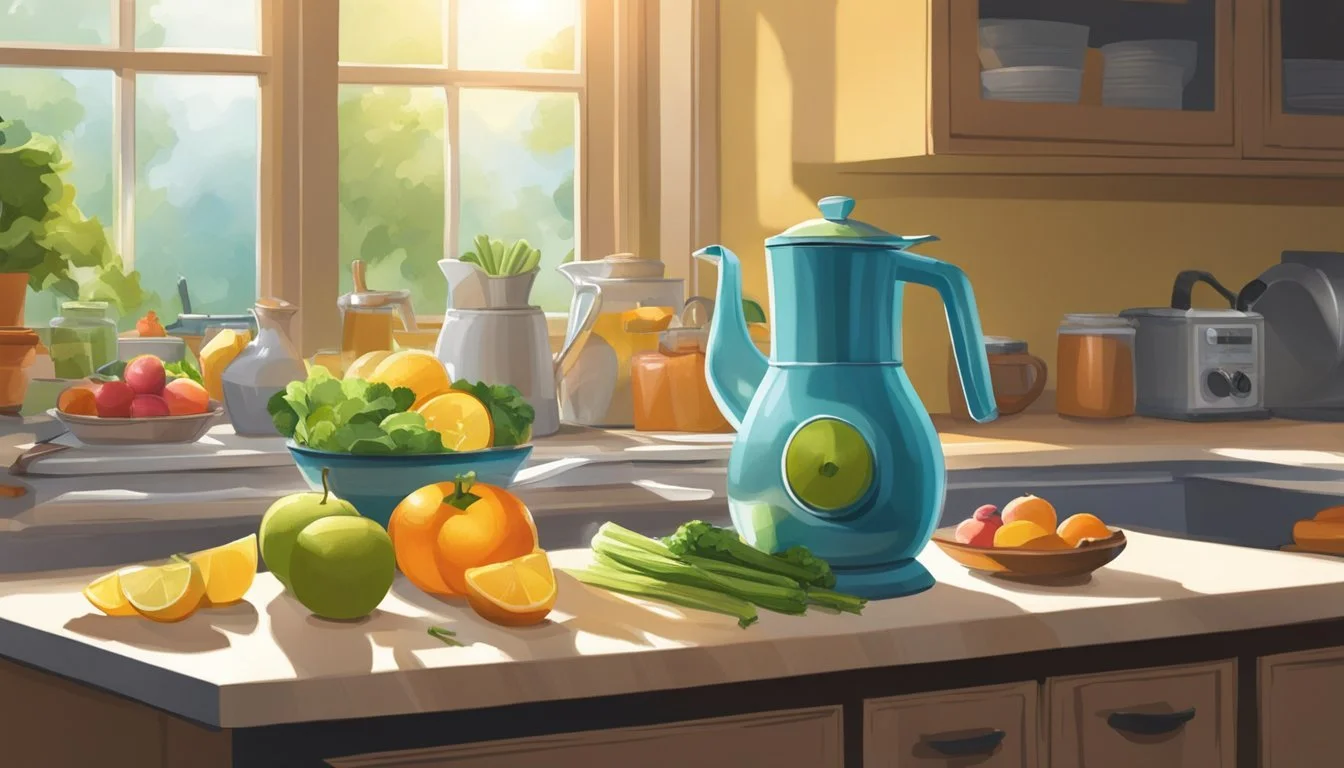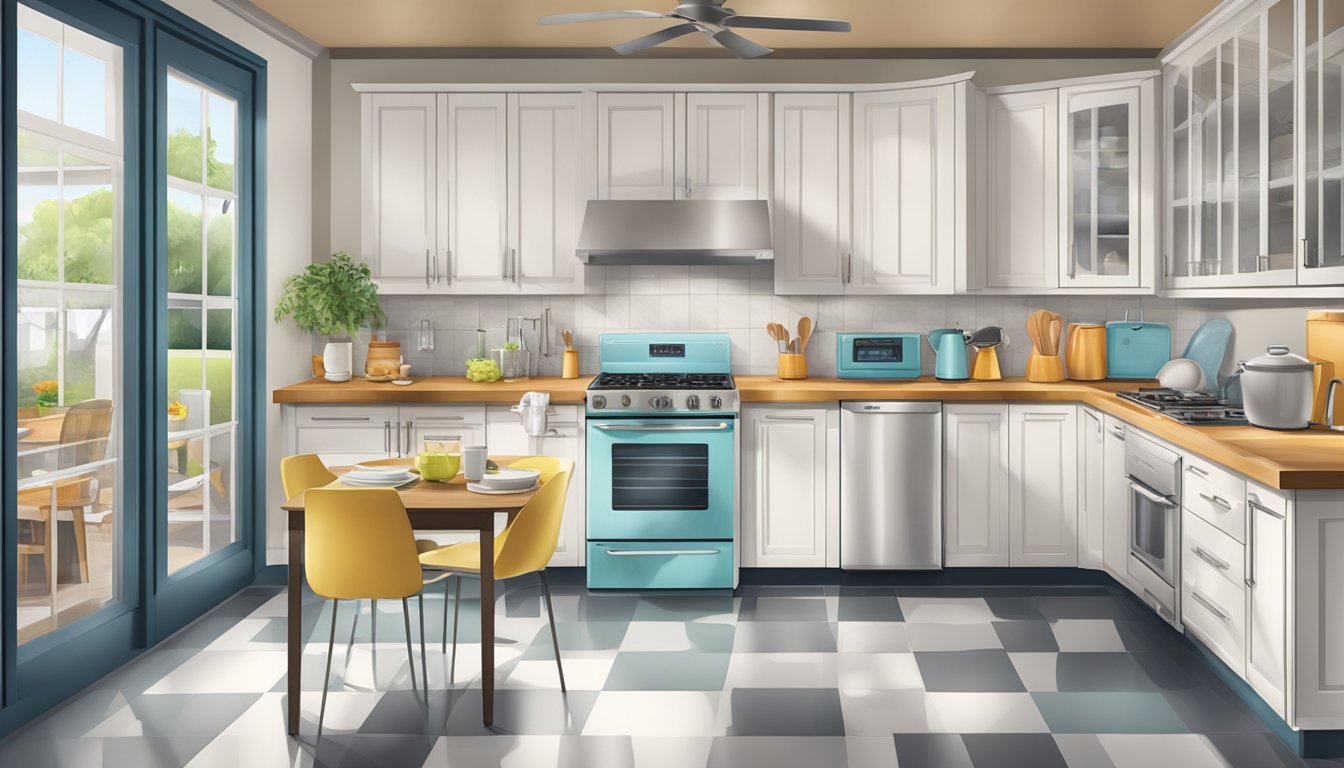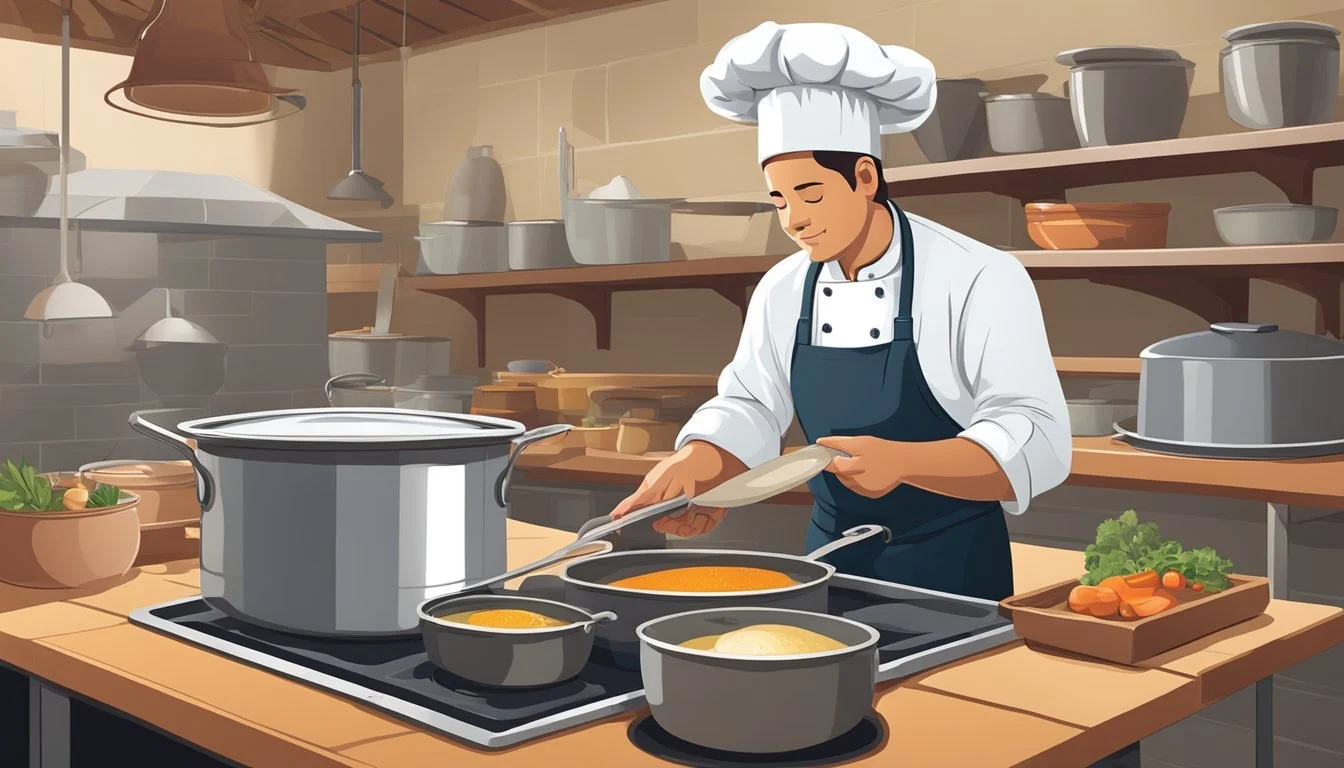How to Cook When You're in a Heatwave
Beat the Heat with No-Sweat Recipes
Cooking during a heatwave presents a unique challenge. The key is to prepare meals without raising the temperature inside your home. Utilizing appliances that generate less heat, such as pressure cookers or slow cookers, offers a solution; these devices can create dishes like succulent pulled pork, which can be conveniently served on burger buns. Not only does this method keep the kitchen cooler, but it also requires minimal attention, making it ideal for hot weather.
Eating habits naturally change with rising temperatures as heavy, hot meals become less appealing. Spicy foods can stimulate the appetite that often wanes during a heatwave. They not only entice the taste buds but also promote sweating, a natural cooling mechanism of the body. Opting for small portions and preferring to graze on lighter fare helps maintain energy levels without the burden of preparing large, heat-generating meals.
Understanding Heatwaves
In the face of extreme heat and high humidity, particularly during summer, heatwaves pose significant challenges. These conditions can drastically affect daily activities, including cooking, which often increases indoor temperatures.
The Science of Heatwaves
Heatwaves are prolonged periods of excessively hot weather, which may be accompanied by high humidity. They are defined by temperatures that are much higher than the average for a particular region and time of year. The criteria for what constitutes a heatwave varies by location due to different climate conditions. For instance, what is considered a heatwave in a cooler climate may be a typical summer day in a hotter region.
The formation of a heatwave can be attributed to a high-pressure system that traps warm air in an area, limiting wind and cloud formation that would typically cool the environment. As this system remains stationary, it can create an 'oven-like' effect, with days of relentless heat without significant night-time relief.
Key Components of a Heatwave:
Temperature: Significantly higher than the average for a region.
Duration: Typically lasting at least two or more days.
Humidity: Can vary but often exacerbates the perception of heat.
How Heat Impacts Cooking
Cooking during a heatwave presents unique challenges as traditional methods of cooking can increase indoor temperatures. The use of stoves and ovens generates additional heat, which can make the indoor climate unbearable, especially when air conditioning is not an option. This often necessitates a shift in cooking methods to keep the living space as cool as possible.
Cooking Adjustments During Heatwaves:
Appliance Choice: Opt for no-heat or low-heat cooking appliances like microwaves, slow cookers, or outdoor grills.
Meal Times: Prepare meals during cooler parts of the day, usually early morning or late evening.
Food Selection: Choose dishes that require minimal or no cooking, such as salads, cold soups, and sandwiches (What wine goes well with sandwiches?).
By understanding the science behind heatwaves and how they impact cooking, individuals can make informed decisions to maintain comfort and safety while preparing meals during extreme heat events.
Pre-Cooking Preparations
In the throes of a heatwave, one's approach to cooking must prioritize minimizing heat production. This necessitates strategies for hydration, keeping the kitchen cool, and ensuring food remains safe to store and consume.
Hydration Strategies
Adequate hydration is crucial during a heatwave. Individuals should consume plenty of water, aiming for at least 8-10 glasses a day. It's advisable to keep a pitcher of water in the fridge for cool, refreshing access. To infuse some variety, adding slices of cucumber or citrus fruits can provide a flavorful twist to regular water, encouraging increased consumption.
Daily Water Intake Table
Morning: 2 glasses
Mid-morning: 2 glasses
Afternoon: 2-3 glasses
Evening: 2 glasses
Keeping Your Kitchen Cool
The kitchen can become a hotbed of heat during a wave. One effective approach is to use appliances such as slow cookers that produce less heat. Keeping curtains or blinds drawn blocks out excess sunlight, contributing to a cooler environment. Consider planning meals that require minimal cooking, or opt for preparing dishes during the cooler parts of the day.
Cool Kitchen Tips:
Use fans or open windows in the early morning or late evening
Cook with countertop appliances like microwaves or pressure cookers
Utilize outdoor grills if possible, to keep heat outside
Food Storage and Safety
Proper food storage is paramount during high temperatures to prevent spoilage and foodborne illnesses. The fridge should be set below 40°F (4°C), and the freezer at 0°F (-18°C) to ensure foods are kept at a safe temperature. Use airtight containers and reusable wraps to extend the freshness of pre-cooked meals (how long do cooked meals last?).
Check fridge and freezer temperatures regularly
Store pre-cooked meals in sealed containers
Always thaw foods in the fridge or microwave, avoiding countertop thawing
Selecting The Right Appliances
During a heatwave, choosing the right kitchen appliances is crucial to maintaining a cooler environment. The goal is to minimize heat without sacrificing the ability to cook delicious meals. Selecting appliances that generate less ambient heat can greatly help in keeping your kitchen cool.
Microwave Cooking
A microwave is an efficient alternative to the oven. It heats food quickly and uses less energy, reducing the overall heat emitted. For example, reheating leftovers or cooking ready-made meals in a microwave is preferable, allowing one to avoid the sustained heat of oven cooking.
Slow Cooker Efficiency
Slow cookers are effective for making a variety of dishes without raising the kitchen temperature significantly. They generate less heat compared to ovens and can be operated over several hours with little to no supervision. Dishes like stews and casseroles, which traditionally require an oven, can be prepared in a slow cooker with comparable results.
Pressure Cooker Usage
Pressure cookers offer rapid cooking times due to the high-pressure steam they generate. They are especially useful for quickly cooking items that would otherwise take a long time, like beans or tough cuts of meat. Because they cook so fast, they contribute less heat to the kitchen environment compared to using an oven for an extended period.
Utilizing an Air Fryer
Air fryers provide a way to fry foods using minimal oil and, unlike deep fryers, emit less heat into the room. They circulate hot air to cook food, which not only reduces heat output but also offers a quicker, cleaner, and healthier cooking method than traditional frying.
Avoiding Oven Usage
One should attempt to minimize or avoid oven usage during a heatwave. Ovens can significantly increase the temperature of a kitchen. If one must bake or roast, it's advisable to do so during the cooler parts of the day, such as early morning or late evening. Moreover, always ensure the exhaust fan is in use to help remove some of the hot air that gathers when the oven is on.
Minimizing Heat Production
When facing a heatwave, it's crucial to strategize your cooking methods and kitchen management to minimize the amount of heat produced. This can significantly help in keeping indoor temperatures lower, making the environment more comfortable and reducing the burden on air conditioning systems.
Cooking Techniques to Reduce Heat
No-Cook Meals: Opting for recipes that require no cooking at all, such as salads or cold sandwiches, eliminates the production of heat from cooking appliances.
Pressure Cookers and Slow Cookers: When cooking is necessary, using a pressure cooker or a slow cooker can be more energy-efficient than ovens and stovetops, and they produce less ambient heat.
Microwaves: They are a quick alternative, generating less heat compared to conventional ovens or stovetops.
Effective Use of Fans and Ventilation
Strategic Fan Placement: Position fans to blow hot air out of the kitchen while drawing in cooler air from other parts of the home or outdoors.
Exhaust Fans: Always use kitchen exhaust fans when cooking to help remove hot air and odors from the kitchen.
Attic Fans: If available, an attic fan can significantly reduce heat build-up in the home by expelling hot air through the attic.
Smart Lighting Choices
LED Bulbs: Replace incandescent light bulbs with energy-efficient LED bulbs, which emit less heat.
Natural Light: Utilize natural light as much as possible to avoid having lights turned on during the day.
Task Lighting: Use task lighting when cooking instead of lighting up the entire kitchen.
Cold Meals and Ingredients
When temperatures soar, one's appetite for light, refreshing meals often increases. Keeping dishes cool and kitchen heat to a minimum is essential; salads and sandwiches become staple meals, utilizing fresh, crisp ingredients that require no heat to prepare.
Salad and Sandwich Creations
For those seeking a refreshing meal without the added warmth of cooking, salads and sandwiches offer a bounty of possibilities. They can include a variety of leafy greens like butter lettuce and arugula, combined with juicy tomatoes and crisp cucumbers (how long do cucumbers last?). Incorporating ripe plums or other sweet fruits can add a delightful flavor contrast. Sandwiches can range from simple veggie stacks to elaborate builds with layers of flavor, like a spread of tangy yogurt dip.
Key Ingredients for Salads:
Greens (lettuce, spinach, arugula)
Fruits (tomatoes, avocados, plums)
Nuts (almonds, walnuts)
Proteins (pre-cooked cold cuts, canned fish, rotisserie chicken)
Sandwich Ideas:
Veggie and hummus wrap
Pre-cooked lobster (What wine goes well with lobster?) or seafood with mayo and lime juice
Rotisserie chicken salad with green onions and celery
Best Ingredients for No-Cook Dinners
The ingredients for no-cook dinners should not only avoid the need for heat but also aim to be inherently cooling. Key components can include the use of ice in preparing chilled vegetable dips or blending smooth, creamy avocado into dressings and spreads. High-water-content vegetables like cucumbers are excellent for hydration, while incorporating dairy-free options like a lemon garlic-tahini sauce can offer a fulfilling yet light alternative to heavier ingredients.
No-Cook Ingredient List:
Vegetables (cucumber, leafy greens, bell peppers)
Fruits (avocado, citrus for dressing)
Proteins (canned fish, pre-cooked meats, beans)
Dressings (yogurt dip, tahini sauce, vinaigrettes)
Herbs and spices for added flavor without the heat
Remember, the focus is on ingredients that promote simple assembly with the promise of a refreshing meal experience during a heatwave.
Hydrating Foods and Beverages
During a heatwave, it’s crucial to consume foods and beverages that contribute to hydration. Regular water intake is vital, but one can also incorporate a variety of drinks and hydrating foods that can help maintain fluid balance.
Refreshing Drinks to Stay Cool
Tea: Both herbal and green teas can be served cold for a refreshing boost. Adding a slice of lemon or a few leaves of mint enhances the flavor and can motivate increased fluid intake.
Water Infusions: Slices of fruits such as strawberries or lemon, or even cucumber, can be added to water to create an enticing, hydrating drink.
Coffee: A moderate amount of cold brew or iced coffee can provide hydration, but one should be cautious as excessive consumption may lead to dehydration due to its diuretic effect.
Fruits and Vegetables for Hydration
Watermelon: This fruit is composed of 92% water and also provides essential hydration salts, like magnesium and potassium.
Strawberries: They are water-dense and offer antioxidants, which are beneficial for health.
Hydrating Vegetables Water Content Cucumber 95% Lettuce 96% Celery 95% Radishes 95%
One should avoid excessive salt as it can cause dehydration by holding onto water within the body.
Smoothies and Ice Pops
Smoothies: They can be a nutritious and hydrating option, combining yogurt or milk with fruits like berries and bananas.
Ice Pops: Homemade ices made from real fruit juice or pureed fruit can serve as a delightful approach to hydration.
When selecting beverages, one should limit alcohol consumption as it has dehydrating properties. Instead, focus on incorporating a balance of hydrating drinks and foods to stay refreshed and replenished.
Safe Cooking Practices in Hot Weather
Cooking during a heatwave requires extra caution to avoid heat-related illnesses. The kitchen can quickly become one of the hottest areas in a home, making it crucial to adopt safe cooking practices.
Preventing Heat-Related Illnesses
When cooking in hot weather, one must ensure the cooking environment is as cool as possible to prevent dizziness or heat exhaustion. Actions to take include:
Keeping Hydrated: Ensure regular fluid intake, especially when spending extended periods in the kitchen.
Using Fans: Position fans strategically to circulate air and reduce room temperature.
Limiting Oven Use: Avoid using the oven during peak heat, as it raises kitchen temperatures significantly.
Cooking During Cooler Hours: Plan meal preparation for early morning or late evening when it's cooler.
Creating Shade: Use blinds or curtains to block direct sunlight from entering the kitchen.
Protective Measures for Vulnerable Groups
Older adults and those with chronic health conditions are especially vulnerable to heat-related illnesses. Catering to vulnerable individuals involves:
Encouraging Rest: They should take frequent breaks and avoid lengthy exposure to the heat.
Cooling Mechanisms: Make use of cool cloths and ensure they are seated in well-ventilated areas with access to a fan or air conditioning.
Monitoring: Keeping a close eye on any signs of heat-related distress is critical.
By following these specific practices, one can reduce the risk of heat-related illnesses and ensure the safety of all involved while cooking during a heatwave.
Alternative Cooking Locations
During a heatwave, maintaining a comfortable temperature indoors is crucial. One way to avoid adding heat inside the home is to utilize alternative cooking locations, like outdoors or in naturally cooler spaces.
Outdoor Grilling Options
Outdoor grilling is an excellent method for cooking without raising indoor temperatures. Utilizing a grill, whether it's gas, charcoal, or electric, allows individuals to prepare a wide range of recipes. Grills not only provide a unique flavor but also keep the heat outside. When grilling, one should consider the following:
Location: Always place grills in open areas away from structures to ensure safety and good ventilation.
Shade: If possible, set up the grill in a shaded area or use a canopy to reduce heat exposure.
Seeking Cooler Spaces
For those without outdoor space or during times when outdoor grilling is not an option, seeking cooler indoor spaces can be a smart alternative for cooking.
Basement: Basements often maintain a lower temperature than the rest of the house and can be ideal for setting up a temporary kitchen space with an electric burner or slow cooker.
Community Spaces: Some may have access to community kitchens in cooler locations like church halls or neighborhood centers that are equipped for cooking.
By exploring these alternative cooking locations, one can comfortably prepare meals during a heatwave while keeping the heat away from the main living spaces.
Cooling Down After Cooking
After cooking in a heatwave, effectively reducing the heat in your home and body is crucial for comfort and health. This section will focus on strategies for creating a cool dining environment, promoting restful sleep, and utilizing the refreshing properties of a cool shower.
Creating a Cool Environment for Eating
To enjoy a meal comfortably during a heatwave, one should ensure the dining area remains cool. If an air conditioner is available, it should be running while the windows are closed to prevent warm air from entering. In absence of an air conditioner, one might open windows to create a cross breeze once the outdoor temperature drops, particularly in the evening. Additionally, it is beneficial to use fans strategically to circulate air without blowing hot air directly onto diners.
Sleep and Resting Tips
A restful night's sleep can be elusive during a heatwave, but a few adjustments can make a significant difference. Individuals should keep windows open at night if it's cooler outside, or use the air conditioner set to a moderate temperature to avoid excessive chill while sleeping. Moreover, taking advantage of the cooler evening temperatures by resting in areas with the best ventilation can help one stay cool. Utilizing breathable cotton sheets can also aid in temperature regulation during sleep.
Taking a Cool Shower
A cool shower can quickly lower a person's body temperature and provide relief after spending time in a hot kitchen. It’s most effective to take a shower with water at a pleasantly cool, not cold, temperature to avoid any shock to the system. Patting the skin dry rather than rubbing can help maintain a cooler feeling on the skin afterward. Additionally, using mild soaps and shower gels that include menthol or eucalyptus can enhance the cooling effect on the skin.
Stay Informed and Prepared
During heat waves, staying informed about the weather and getting regular updates on how to deal with the intense heat is crucial. Preparation can mitigate the risks associated with heat waves.
Monitoring Weather Conditions
One should always monitor local weather forecasts to stay aware of upcoming heat waves. Reliable sources include government weather websites and local news channels. They can provide vital information on the severity and duration of the heat wave, enabling individuals to plan ahead and adjust their daily activities accordingly. Weather apps on smartphones can also send real-time alerts for sudden weather changes.
Subscribing to a Newsletter for Tips
Subscribing to a specialized newsletter can offer targeted tips on handling extreme heat situations. These newsletters often come from trusted organizations, such as the National Weather Service or local health departments, and can offer:
Practical advice: on staying cool and hydrated.
Updates: on community resources, such as cooling centers.
Health information: to recognize and respond to heat-related illnesses.
It is beneficial to choose a newsletter that provides advice tailored to one's local area, as climate and available resources can vary significantly.






